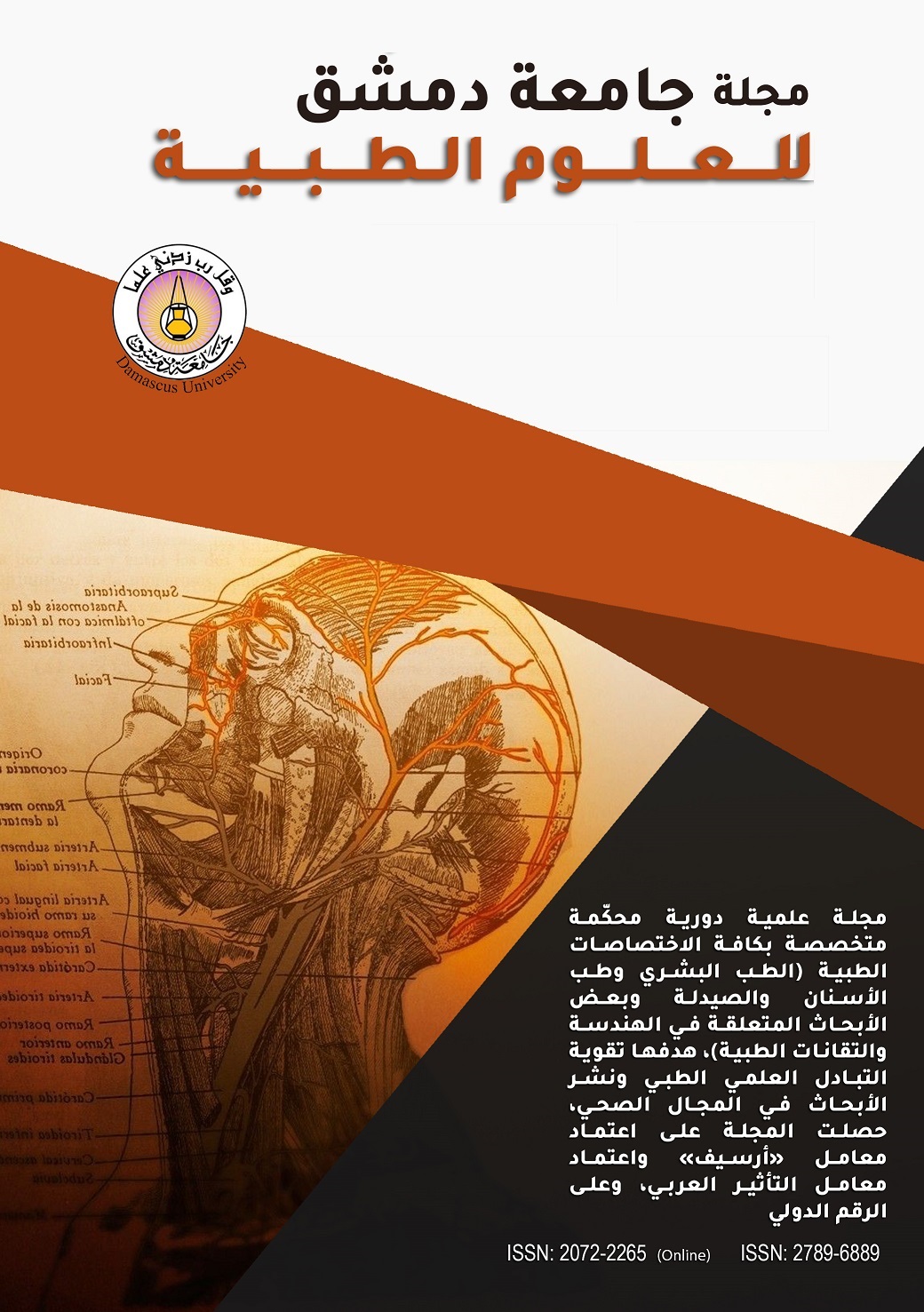A Descriptive Study of Guillain Barre Syndrome Patients at Al-Assad University Hospital of Damascus in 2016
Keywords:
Guillain Barre SyndromeAbstract
Background: Guillain barre syndrome is the most common cause of acute flaccid paralysis. There are a few distinctive clinical and pathological subtypes of this syndrome. GBS is believed to happens as a result of autoimmunity disturbance and the management consists of close observation and monitoring because of the risk of respiratory failure and autonomic nervous system involvement.
Objective: to know the number of patients with GBS and to demonstrate the distinctive clinical and electrophysiological subtypes in addition to the response for provided treatment.
Material & Methods: the study included all admitted patients with the diagnosis of GBS to the neurology, emergency wards and the ICU at Alassa hospital within 2016, the medical records of these patients were revised and the information about the age, sex, place of residency, the period of symptoms, the electrophysiological subtype, the treatment, the recovery and the mortality rate were collected. All available data were analyzed with SPSS statistical program.
Results: the results of the study were as follows: 56 patients with the diagnosis of GBS were admitted within the year of 2016, 57.9% of them were males, 42.1% were females. and the peak of incidence was in the 3rd and 4th decades with a tendency of the incidence to raise in fall and spring.61.4% of patients have an axonal type of syndrome and 38.6% have the demyelinating type, previous respiratory infection symptoms were recorded in 42.1% of patients and gastrointestinal infection symptoms in 24.6%, the mortality rate was 5.3%. Conclusion: there is an increase of the incidence of GBS in fall and spring Seasons. The Axonal subtype of the syndrome is the dominant subtype.

